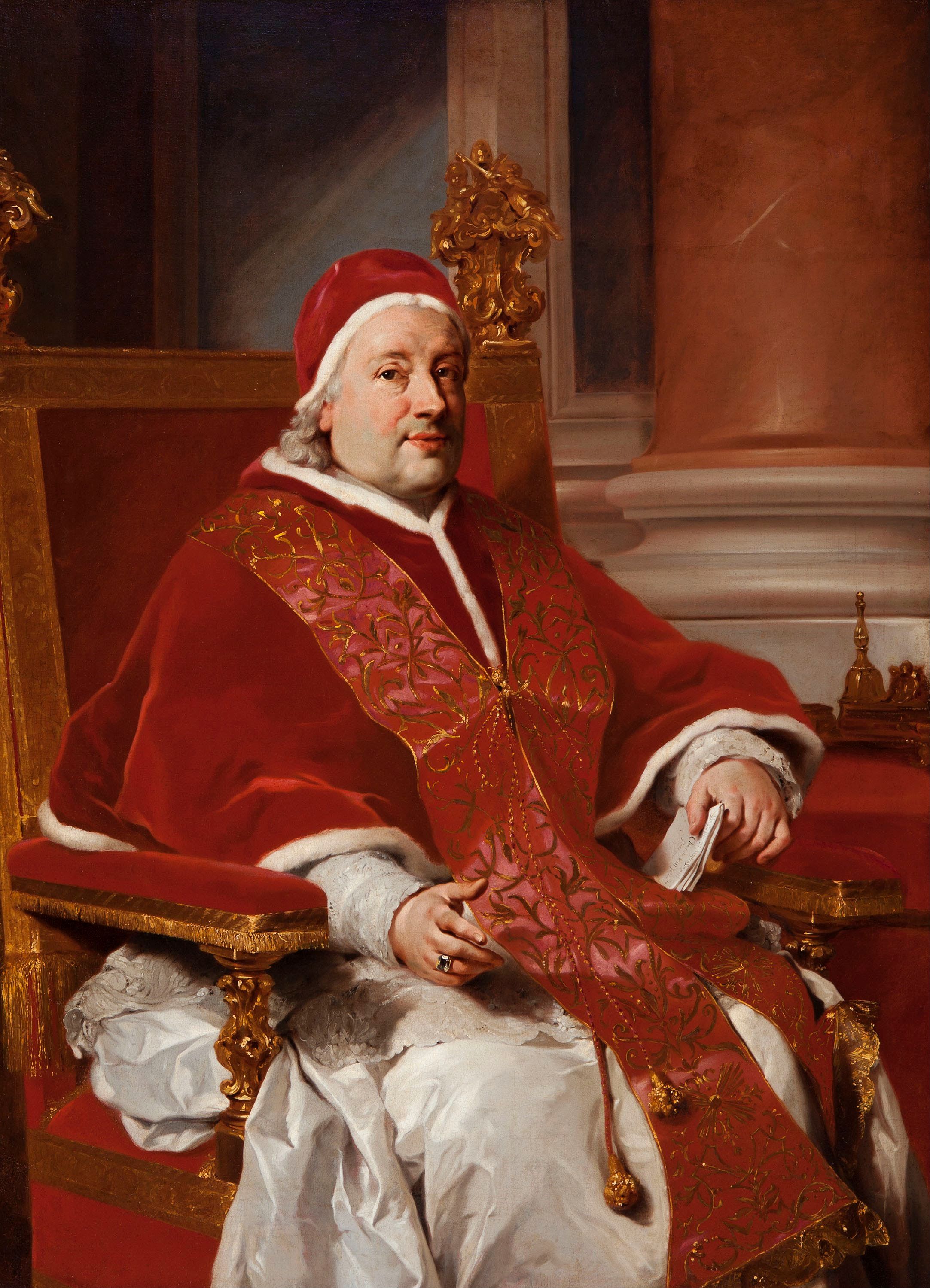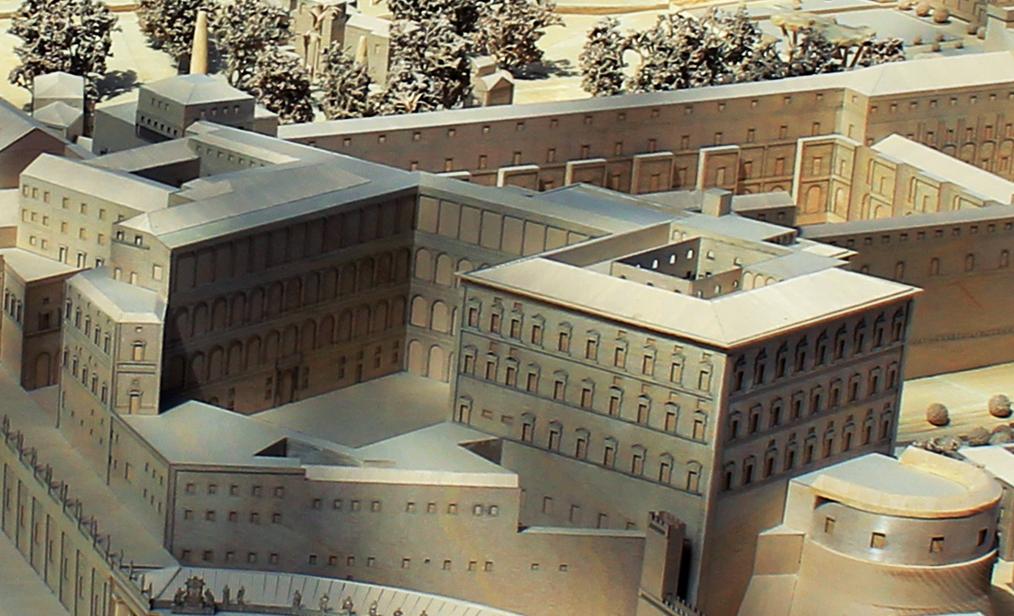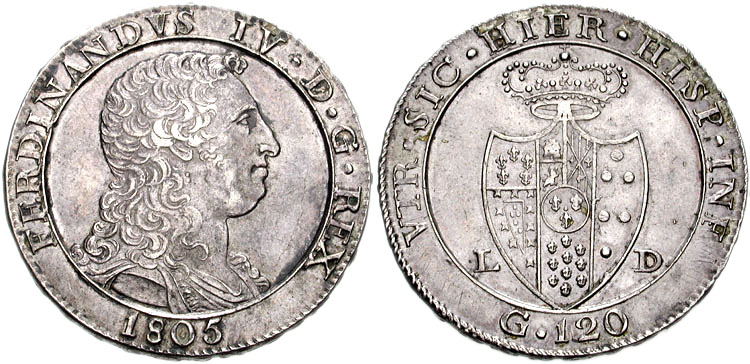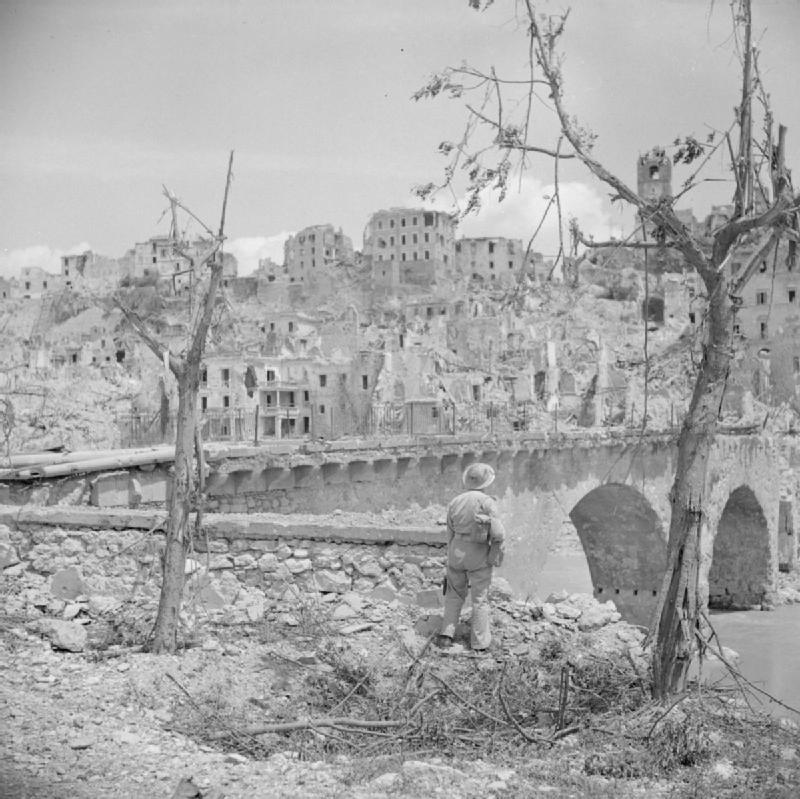|
Papal Conclave In 1769
The 1769 papal conclave (15 February – 19 May), was convoked after the death of Pope Clement XIII. It elected as his successor Cardinal Lorenzo Ganganelli, who took the name Clement XIV. Death of Clement XIII Clement XIII died suddenly on 2 February 1769, a day before the date of the consistory that he had convoked to examine the demands for the general suppression of the Society of Jesus. The various courts under the House of Bourbon and the Kingdom of Portugal (under the House of Braganza) had exerted strong pressure on the Holy See to suppress this order through almost the whole of his pontificate. In 1759, Jesuits were expelled from Portugal and all its possessions, in 1764 from the Early Modern France, Kingdom of France, in 1767 from Spain and in 1768 from the Kingdom of Naples, the Kingdom of Sicily and the Duchy of Parma and Piacenza. Clement XIII strongly defended the Society (e.g. in the bull ''Apostolicum pascendi'' in 1765), but without success. In January 1769 Fra ... [...More Info...] [...Related Items...] OR: [Wikipedia] [Google] [Baidu] |
Apostolic Palace
The Apostolic Palace ( la, Palatium Apostolicum; it, Palazzo Apostolico) is the official residence of the pope, the head of the Catholic Church, located in Vatican City. It is also known as the Papal Palace, the Palace of the Vatican and the Vatican Palace. The Vatican itself refers to the building as the Palace of Sixtus V, in honor of Pope Sixtus V, who built most of the present form of the palace. The building contains the papal apartments, various offices of the Catholic Church and the Holy See, private and public chapels, Vatican Museums, and the Vatican Library, including the Sistine Chapel, Raphael Rooms, and Borgia Apartment. The modern tourist can see these last and other parts of the palace, but other parts, such as the Sala Regia (Vatican), Sala Regia (Regal Room) and Cappella Paolina, had long been closed to tourists, though the Sala Regia allowed occasional tourism by 2019. The Scala Regia (Vatican), Scala Regia (Regal Staircase) can be viewed from one end and used ... [...More Info...] [...Related Items...] OR: [Wikipedia] [Google] [Baidu] |
Kingdom Of Naples
The Kingdom of Naples ( la, Regnum Neapolitanum; it, Regno di Napoli; nap, Regno 'e Napule), also known as the Kingdom of Sicily, was a state that ruled the part of the Italian Peninsula south of the Papal States between 1282 and 1816. It was established by the War of the Sicilian Vespers (1282–1302), when the island of Sicily revolted and was conquered by the Crown of Aragon, becoming a separate kingdom also called the Kingdom of Sicily. In 1816, it reunified with the island of Sicily to form the Kingdom of the Two Sicilies. The territory of the Kingdom of Naples corresponded to the current Italian regions of Campania, Calabria, Apulia, Basilicata, Abruzzo, Molise and also included some areas of today's southern and eastern Lazio. Nomenclature The term "Kingdom of Naples" is in near-universal use among historians, but it was not used officially by the government. Since the Angevins remained in power on the Italian peninsula, they kept the original name of the Kingdom ... [...More Info...] [...Related Items...] OR: [Wikipedia] [Google] [Baidu] |
Ferdinand I Of The Two Sicilies
Ferdinand I (12 January 1751 – 4 January 1825) was the King of the Two Sicilies from 1816, after his restoration following victory in the Napoleonic Wars. Before that he had been, since 1759, Ferdinand IV of the Kingdom of Naples and Ferdinand III of the Kingdom of Sicily. He was also King of Gozo. He was deposed twice from the throne of Naples: once by the revolutionary Parthenopean Republic for six months in 1799 and again by Napoleon in 1805, before being restored in 1816. Ferdinand was the third son of King Charles VII of Naples and V of Sicily by his wife, Maria Amalia of Saxony. On 10 August 1759, Charles succeeded his elder brother, Ferdinand VI, becoming King Charles III of Spain, but treaty provisions made him ineligible to hold all three crowns. On 6 October, he abdicated his Neapolitan and Sicilian titles in favour of his third son, because his eldest son Philip had been excluded from succession due to imbecility and his second son Charles was heir-apparent to the S ... [...More Info...] [...Related Items...] OR: [Wikipedia] [Google] [Baidu] |
Charles III Of Spain
it, Carlo Sebastiano di Borbone e Farnese , house = Bourbon-Anjou , father = Philip V of Spain , mother = Elisabeth Farnese , birth_date = 20 January 1716 , birth_place = Royal Alcazar of Madrid, Spain , death_date = , death_place = Royal Palace of Madrid, Spain , place of burial= El Escorial , religion = Roman Catholicism , signature = Autograph Charles III of Spain.svg Charles III (born Charles Sebastian; es, Carlos Sebastián; 20 January 1716 – 14 December 1788) was King of Spain (1759–1788). He also was Duke of Parma and Piacenza, as Charles I (1731–1735); King of Naples, as Charles VII, and King of Sicily, as Charles V (1734–1759). He was the fifth son of Philip V of Spain, and the eldest son of Philip's second wife, Elisabeth Farnese. A proponent of enlightened absolutism and regalism, he succeeded to the Spanish throne on 10 August 1759, upon the death of his childless half-brother Ferdinand VI. In 1731, t ... [...More Info...] [...Related Items...] OR: [Wikipedia] [Google] [Baidu] |
Louis XV Of France
Louis XV (15 February 1710 – 10 May 1774), known as Louis the Beloved (french: le Bien-Aimé), was King of France from 1 September 1715 until his death in 1774. He succeeded his great-grandfather Louis XIV at the age of five. Until he reached maturity (then defined as his 13th birthday) on 15 February 1723, the kingdom was ruled by his grand-uncle Philippe II, Duke of Orléans, as Regent of France. Cardinal Fleury was chief minister from 1726 until his death in 1743, at which time the king took sole control of the kingdom. His reign of almost 59 years (from 1715 to 1774) was the second longest in the history of France, exceeded only by his predecessor, Louis XIV, who had ruled for 72 years (from 1643 to 1715). In 1748, Louis returned the Austrian Netherlands, won at the Battle of Fontenoy of 1745. He ceded New France in North America to Great Britain and Spain at the conclusion of the disastrous Seven Years' War in 1763. He incorporated the territories of the Duchy of Lorra ... [...More Info...] [...Related Items...] OR: [Wikipedia] [Google] [Baidu] |
Cardinal-nephew
A cardinal-nephew ( la, cardinalis nepos; it, cardinale nipote; es, valido de su tío; pt, cardeal-sobrinho; french: prince de fortune)Signorotto and Visceglia, 2002, p. 114. Modern French scholarly literature uses the term "cardinal-neveu'". was a cardinal elevated by a pope who was that cardinal's relative. The practice of creating cardinal-nephews originated in the Middle Ages, and reached its apex during the 16th and 17th centuries. The last cardinal-nephew was named in 1689 and the practice was abolished in 1692.Bunson, Matthew. 1995.Cardinal Nephew. ''The Pope Encyclopedia''. Crown Trade Paperbacks. . The word ''nepotism'' originally referred specifically to this practice, when it appeared in the English language about 1669. From the middle of the Avignon Papacy (1309–1377) until Pope Innocent XII's anti-nepotism bull (a papal charter), ''Romanum decet pontificem'' (1692), a pope without a cardinal-nephew was the exception to the rule. Every Renaissance pope who creat ... [...More Info...] [...Related Items...] OR: [Wikipedia] [Google] [Baidu] |
Zelanti
{{unreferenced, date=April 2014 In Roman Catholicism, the expression ''zelanti'' has been applied to conservative members of the clergy and their lay supporters since the thirteenth century. Its specific connotations have shifted with each reapplication of the label. The Latinate term applies to those who show zeal. In its original thirteenth-century application the ''zelanti'' were those members of the Franciscan Order who opposed any changes or relaxation to the Rule formulated by St. Francis of Assisi in 1221 and 1223. In consequence of St. Francis's severe requirements concerning the practice of poverty, his followers divided into two branches, the ''Zelanti'', or Spirituals, and the ''Relaxati'', known later as the Conventuals. The origin of the Fraticelli and the cause of their growth within and without the Franciscan Order must be sought in the history of the ''zelanti'' or "Spirituals". In the eighteenth century the ''zelanti'' were the supporters of the Jesuits in the long ... [...More Info...] [...Related Items...] OR: [Wikipedia] [Google] [Baidu] |
College Of Cardinals
The College of Cardinals, or more formally the Sacred College of Cardinals, is the body of all cardinals of the Catholic Church. its current membership is , of whom are eligible to vote in a conclave to elect a new pope. Cardinals are appointed by the pope for life. Changes in life expectancy partly account for the increases in the size of the college.Broderick, 1987, p. 13. Since the emergence of the College of Cardinals in the early Middle Ages, the size of the body has historically been limited by popes, ecumenical councils, and even the College itself. The total number of cardinals from 1099 to 1986 has been about 2,900 (excluding possible undocumented 12th-century cardinals and pseudocardinals appointed during the Western Schism by pontiffs now considered to be antipopes, and subject to some other sources of uncertainty), nearly half of whom were created after 1655.Broderick, 1987, p. 11. History The word ''cardinal'' is derived from the Latin ''cardō'', meaning "h ... [...More Info...] [...Related Items...] OR: [Wikipedia] [Google] [Baidu] |
Society Of Jesus
, image = Ihs-logo.svg , image_size = 175px , caption = ChristogramOfficial seal of the Jesuits , abbreviation = SJ , nickname = Jesuits , formation = , founders = , founding_location = , type = Order of clerics regular of pontifical right (for men) , headquarters = Generalate:Borgo S. Spirito 4, 00195 Roma-Prati, Italy , coords = , region_served = Worldwide , num_members = 14,839 members (includes 10,721 priests) as of 2020 , leader_title = Motto , leader_name = la, Ad Majorem Dei GloriamEnglish: ''For the Greater Glory of God'' , leader_title2 = Superior General , leader_name2 = Fr. Arturo Sosa, SJ , leader_title3 = Patron saints , leader_name3 = , leader_title4 = Ministry , leader_name4 = Missionary, educational, literary works , main_organ = La Civiltà Cattoli ... [...More Info...] [...Related Items...] OR: [Wikipedia] [Google] [Baidu] |
Pontecorvo
Pontecorvo is a town and ''comune'' in the province of Frosinone, Lazio, Italy. Its population is c. 13,200. History The village lies under Rocca Guglielma, a medieval fortification perched on an inaccessible spur. Its name derives from the ''pons curvus'', "curved bridge", that may still be seen spanning the Liri in the center of the town that grew around the bridgehead in the course of the Middle Ages. The curve of the bridge was intended to divert timbers that might strike its piers during floods. The folk etymology of ''corvo'', "crow", symbol of the "black monks", the Benedictines of the abbey of Monte Cassino, within whose secular territory, the ''Terra Sancti Benedicti'', Pontecorvo lay, is displayed in the town's modern coat-of-arms, which represents a crow surmounting a curved bridge. In Roman times the agricultural region was governed from ''Aquinum'', the modern Aquino. Some Roman remains have been retrieved from a villa site at Sant'Oliva. The medieval commune dates ... [...More Info...] [...Related Items...] OR: [Wikipedia] [Google] [Baidu] |
Benevento
Benevento (, , ; la, Beneventum) is a city and ''comune'' of Campania, Italy, capital of the province of Benevento, northeast of Naples. It is situated on a hill above sea level at the confluence of the Calore Irpino (or Beneventano) and the Sabato. In 2020, Benevento has 58,418 inhabitants. It is also the seat of a Catholic archbishop. Benevento occupies the site of the ancient Beneventum, originally Maleventum or even earlier Maloenton. The meaning of the name of the town is evidenced by its former Latin name, translating as good or fair wind. In the imperial period it was supposed to have been founded by Diomedes after the Trojan War. Due to its artistic and cultural significance, the Santa Sofia Church in Benevento was declared a UNESCO World Heritage Site in 2011, as part of a group of seven historic buildings inscribed as Longobards in Italy, Places of Power (568–774 A.D.). A patron saint of Benevento is Saint Bartholomew, the Apostle, whose relics are kept ther ... [...More Info...] [...Related Items...] OR: [Wikipedia] [Google] [Baidu] |
Avignon
Avignon (, ; ; oc, Avinhon, label=Provençal dialect, Provençal or , ; la, Avenio) is the Prefectures in France, prefecture of the Vaucluse Departments of France, department in the Provence-Alpes-Côte d'Azur Regions of France, region of Southeastern France. Located on the left bank of the river Rhône, the Communes of France, commune had a population of 93,671 as of the census results of 2017, with about 16,000 (estimate from Avignon's municipal services) living in the ancient town centre enclosed by its Walls of Avignon, medieval walls. It is Functional area (France), France's 35th largest metropolitan area according to Institut national de la statistique et des études économiques, INSEE with 336,135 inhabitants (2019), and France's 13th largest urban unit with 458,828 inhabitants (2019). Its urban area was the fastest-growing in France from 1999 until 2010 with an increase of 76% of its population and an area increase of 136%. The Communauté d'agglomération du Grand Av ... [...More Info...] [...Related Items...] OR: [Wikipedia] [Google] [Baidu] |









